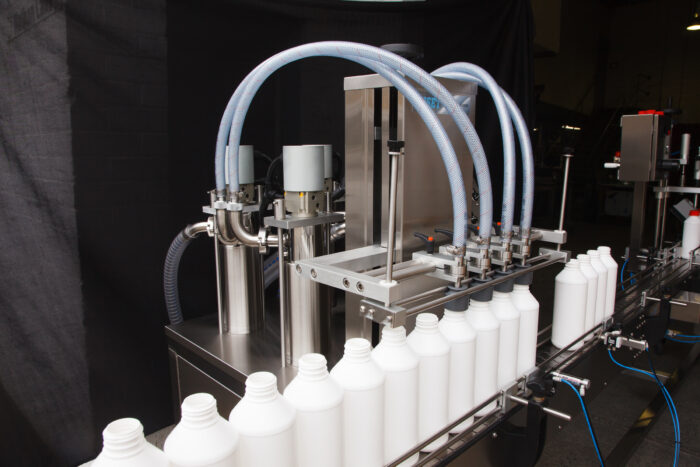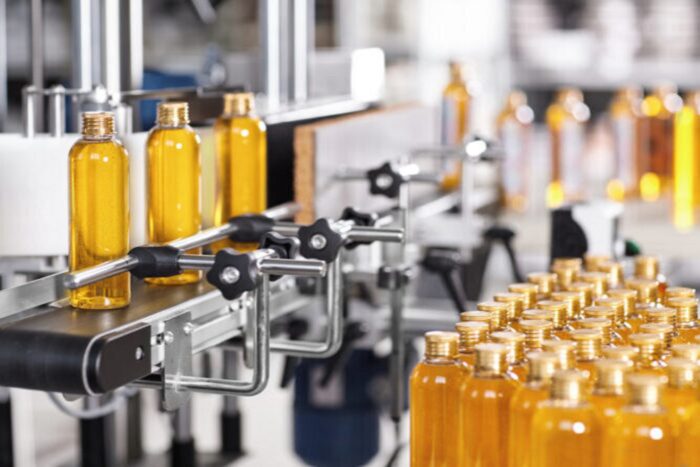With an increasing number of Australian companies investing in liquid filling machines, the first question that springs to mind is ‘How much do they cost?’ You can find tabletop filling machines, perfect for home businesses, for a few hundred dollars. At the other end of the scale, advanced automated filling machines designed for large production lines can cost millions.
Of course, the picture is complex, and even machines of the same type can vary in price. As any good business owner knows, lower cost does not always mean cheaper. A machine will work out more expensive if it costs money for maintenance and downtime or becomes obsolete.
This article will look at some of the factors influencing the cost of liquid filling machines. It will also help you look at what your business needs and find the best quality within your budget.
Factors influencing liquid filling machine cost
As with any product, several different factors influence the price. Just as importantly, they determine whether you are getting value for money when you invest in a filling machine to increase production.
Build quality
Liquid filling machines can vary in quality, and cheaper options sometimes use inferior materials that are not as durable. Some are mass-produced, which can sometimes lead to quality issues. Machines built with individual attention and full compliance with standards usually cost more but are more robust, easier to service and long-lasting. In addition, it’s easier to clean and sterilise machines with superior build quality and materials.
At the high-volume end of the market, where machines face constant high stresses, durability is crucial because maintenance and replacement parts add to the lifecycle cost. In general, reliability and longevity for liquid filling machines scale with cost.

Ongoing Support
It’s important to consider the services included within the cost, which can potentially benefit your business in the long run. For example, companies producing more costly machines may offer a far more extensive support network with quick maintenance and high parts availability. Of course, this costs money, which influences the higher price of the equipment. But in turn, this means reduced downtime and increased throughput for your production line.
Automation
As you would expect, the level of automation makes a difference – with automatic machines more expensive than semi-automatic variants. A fully automated machine with programmable logic controllers naturally costs more. If a machine includes centralised computer control, sensors, and monitoring, these ramp up the cost significantly.
A business has to assess the level of automation they need and determine if the additional costs are worthwhile over time. Higher production speeds and reduced labour costs offset the initial investment for some. Of course, many suppliers offer systems you can upgrade later, reducing the investment risk at the outset.
Output speed and customisation
The output speed of the machine is very important, and quicker machines usually cost more. They may need more filling heads or offer faster filling cycles, requiring more moving parts and much higher build quality. For many businesses, an off-the-shelf liquid filling machine suits their business needs perfectly. However, companies with specialised requirements may need a customised option, which will be more expensive but ultimately worthwhile. As an example, companies producing multiple products at plants will opt for liquid filling machines with the flexibility to handle different concepts to maximise production.

Product Type
When liquid filling, some products are more difficult to work with than others, and equipment able to cope with these attracts a premium. For example, hot liquids, thick pastes, and suspensions are tricky, while very large or very small containers can require specialised machinery.
Precision and accuracy
For industries where high precision and accuracy are required, suitable filling machines can be more expensive. However, fines for incorrect volumes and lost clients can cost significantly more over time.
Types of Filling Machines
It is difficult to answer exactly what a liquid filling machine costs because there are so many different types, brands, and models. As a rough guide, here are broad ranges for the most common types.
Hobbyist filling machines
These small machines are perfect for home enterprises and micro businesses, usually consisting of a semi-automatic machine with a single or double head. You place the container, pull the lever, and fill to the preset level. A basic model costs about $200, while high-quality machines with multiple heads, electric filling, or incorporated weighing scales can range up to $1,000 or more.
Commercial semi-automatic filling machines
The number of heads and range of products a commercial machine can handle strongly affects the price. A good quality semi-automatic filling machine with a single head, such as Asset Packaging Machines’ AV3-1C, costs up to $20,000. You can find machines for a few thousand dollars, although these may lack some functions or are not robust enough for prolonged use.
Commercial fully automatic filling machines
A good quality lower-end model that suits a small business can start from $30,000. They often provide only basic functions and support only a single product type. As an example of a good value system that ticks many boxes, Asset Packaging Machines’ AMF-4C retails at just over $80,000.
At the top of the range, larger machines with multiple heads can easily run into hundreds of thousands of dollars. Huge machines intended for factories producing thousands of units an hour run into millions.

Conclusion
Many factors influence the cost of a machine and determine whether the total cost suits your business in the long term. Whatever machine you opt for, and whatever your budget, don’t forget that you may need additional equipment, especially if you want to operate a fully automated production line. You may need conveyors, accumulating tables, and capping machines to keep products flowing because a production line is only as fast as its slowest process.
Asset Packing Machines’ systems are a great place to start for high-quality liquid filling machines at competitive prices. We produce machines that tirelessly serve production lines for decades using high-quality materials and exacting quality control. To find out more about how our systems can help your business and fit into your budget, contact us and talk to one of our experienced technicians.











